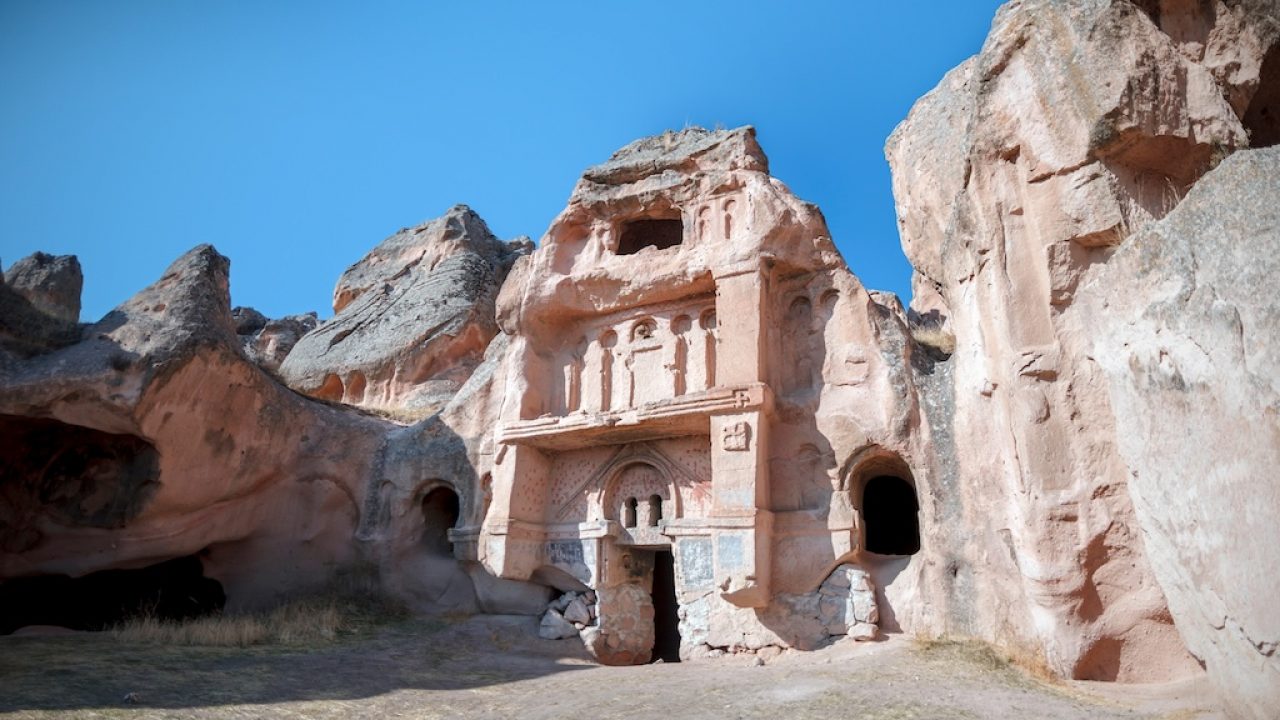
© shutterstock
Fazal Ahmad, London, UK
Location: Göreme, Türkiye
Belief: Christianity
Era: 6th Century CE
A mystery hides within the caves of Southern Türkiye. After volcanic eruptions created cave complexes in the renowned region of Cappadocia, the ancient locals built places of worship over 3,800 years ago. Centuries of erosion left fascinating cone-like structures.
In the 3rd century BCE, mini-states dotted Cappadocia. The Romans, Greeks and Persians all vied for control over this region, which made the caves a sanctuary during tumultuous times. For example, early Christians used to escape into such caves.
As Christianity became the state religion of the Roman Empire, it was also intolerant to the spectrum of sects that had already formed. Christians in Turkey escaped persecution in this region’s rock caves and cities. By 260 CE, St Basil of Kayseri laid down some basic rules for the Christian monks and their followers.
Many Cappadocian Christians followed the theology of the early Christian scholar Origen, who did not see the Trinity as three deities; rather, he believed Jesus (as) was subordinate to the Father. These Christians required sanctuary from mainstream Christianity, which formally adopted the Trinity in 325 CE at the Council of Nicaea in western Tukey. George of Cappadocia was a known champion of this form of Christianity, which opposed the Trinity, but he was imprisoned and killed.
Ironically, when the Arab Muslims conquered the land, they allowed local communities to seek sanctuary in the underground cities. The Cappadocian Christians gained greater freedom to practice under Muslims than they did under the Roman Christians.
The churches remained hidden for many centuries. The French Jesuit, Pere Guillaume de Jerphanion rediscovered the rock churches a century ago, in the summer of 1907 CE.
The cave’s rock material makes carving dwellings and cultural spaces easy. The insulated rock provided spaces that were cool in the hot summer months and insulated in the cold winters, spawning underground cities such as Derinkuyu and Kaymakli, which had populations of over 10,000 and may even have been connected to each other through underground tunnels.
For the modern visitor, starting at Göreme and taking in small towns on the way to Kayseri, there are an estimated 3,000 rock churches. The churches were easy to carve into the soft rock, and adopted an elaborate architecture of pillars, domes and beautiful artwork, although much of the original artwork was destroyed as it portrayed images of people.
References:
H. Bettenson, The Early Christian Fathers, 11th Impression (Oxford, UK: Oxford University Press, 1991).
T. Can, Turkey, Cradle of Civilization, 4th Edition (Istanbul, Türkiye: Orient Publication, 2001).
A. Mason, Spiritual Places – The World’s Most Sacred Sites (London, UK: Quercus Books Ltd, 2014).




Add Comment